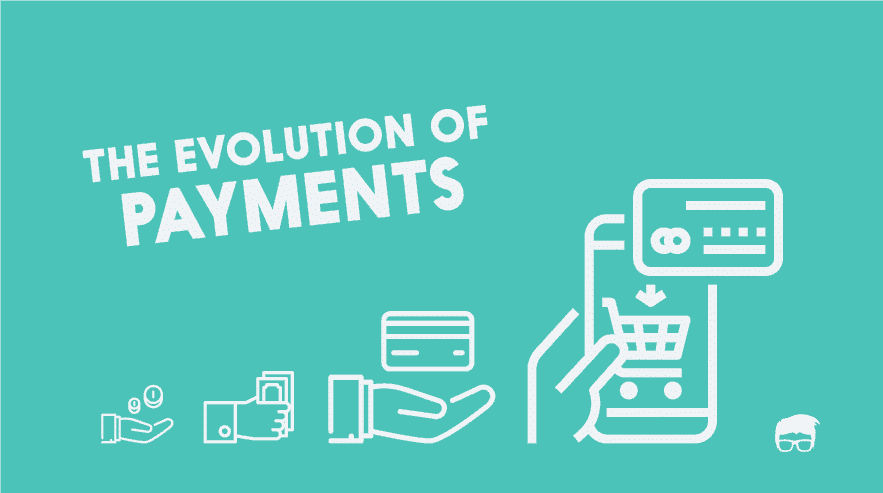THE EVOLUTION OF PAYMENT SOFTWARE: TRENDS AND INNOVATIONS

In the fast-paced digital era, payment software has undergone a profound evolution, transforming the way individuals and businesses handle financial transactions. From the advent of electronic payments to the rise of innovative financial technologies, the landscape of payment software is dynamic and continually evolving. In this comprehensive exploration, we delve into the historical milestones, current trends, and emerging innovations that have shaped the evolution of payment software, paving the way for a seamless and secure financial future.
1. THE DAWN OF ELECTRONIC PAYMENTS
A. CREDIT CARDS AND DEBIT CARDS
The transition from traditional cash transactions to electronic payments marked a significant milestone in the evolution of payment software. Credit cards and debit cards emerged as convenient alternatives, allowing users to make purchases without the need for physical currency. The widespread adoption of plastic cards laid the foundation for the digital payment revolution.
B. POINT-OF-SALE (POS) SYSTEMS
The introduction of Point-of-Sale systems streamlined in-person transactions. Businesses adopted POS terminals that could process card payments, providing a secure and efficient way to accept electronic payments at brick-and-mortar establishments.
2. THE RISE OF ONLINE BANKING AND E-COMMERCE
A. ONLINE BANKING PLATFORMS
The advent of online banking platforms brought financial services to users' fingertips. Online banking allowed individuals to manage their accounts, transfer funds, and pay bills from the comfort of their homes. This digital shift set the stage for the expansion of electronic financial transactions.
B. E-COMMERCE PLATFORMS
The proliferation of e-commerce platforms introduced a new paradigm for retail transactions. Users could now shop online and make payments electronically. Payment gateways facilitated secure online transactions, giving rise to a global marketplace accessible to anyone with an internet connection.
3. MOBILE PAYMENTS AND DIGITAL WALLETS
A. MOBILE PAYMENT APPS
The integration of mobile payment apps into smartphones revolutionized how people make payments. Apps like Apple Pay, Google Pay, and Samsung Pay allowed users to store payment information securely on their devices and make contactless transactions at compatible terminals.
B. DIGITAL WALLETS
Digital wallets expanded the concept of mobile payments by incorporating additional features such as loyalty programs, rewards, and the ability to store various payment methods in one place. Services like PayPal and Venmo facilitated peer-to-peer transactions, further diversifying the options available to users.
4. CRYPTOCURRENCY AND BLOCKCHAIN TECHNOLOGY
A. RISE OF CRYPTOCURRENCIES
The emergence of cryptocurrencies, led by Bitcoin, introduced a decentralized form of digital currency. Blockchain technology underpins cryptocurrencies, providing a secure and transparent ledger. Cryptocurrencies offer the potential for borderless, peer-to-peer transactions without the need for traditional financial intermediaries.
B. BLOCKCHAIN IN PAYMENT PROCESSIN
Beyond cryptocurrencies, blockchain technology has found applications in traditional payment processing. Its decentralized and tamper-resistant nature enhances the security and transparency of financial transactions. Blockchain's potential to streamline cross-border payments and reduce processing times has garnered significant attention.
5. CONTACTLESS AND BIOMETRIC PAYMENTS
A. CONTACTLESS PAYMENT CARDS
Contactless payment cards, equipped with Near Field Communication (NFC) technology, enable users to make transactions by simply tapping their cards on compatible terminals. This technology has become increasingly popular for its speed and convenience.
B. BIOMETRIC AUTHENTICATION
Biometric payment methods, such as fingerprint and facial recognition, add an extra layer of security to transactions. Users can authorize payments through biometric verification, reducing reliance on traditional authentication methods like PINs and passwords.
6. ARTIFICIAL INTELLIGENCE AND PREDICTIVE ANALYTICS
A. AI IN FRAUD DETECTION
Artificial Intelligence (AI) plays a crucial role in enhancing security by powering advanced fraud detection systems. Machine learning algorithms analyze transaction patterns and detect anomalies, providing real-time alerts for potentially fraudulent activities.
B. PREDICTIVE ANALYTICS FOR PERSONALIZED OFFERS
Payment software utilizes predictive analytics to offer personalized recommendations and discounts based on user behavior. By analyzing transaction history and preferences, AI-driven systems can enhance the user experience and encourage customer loyalty.
7. SUBSCRIPTION AND RECURRING PAYMENTS
A. SUBSCRIPTION-BASED MODELS
The subscription-based business model has gained prominence, especially in the software and entertainment industries. Payment software facilitates seamless recurring payments, allowing users to subscribe to services and automatically pay for them on a regular basis.
B. AUTOMATED BILLING SYSTEMS
Automated billing systems simplify the process of managing recurring payments for businesses. These systems send invoices, process payments, and update billing information automatically, reducing administrative overhead and ensuring a consistent revenue stream.
CHALLENGES AND CONSIDERATIONS IN PAYMENT SOFTWARE EVOLUTION
Despite the remarkable advancements, challenges persist in the evolving landscape of payment software:
SECURITY CONCERNS
As digital transactions become more prevalent, the risk of cybersecurity threats increases. Payment software must continually evolve to stay ahead of potential vulnerabilities and safeguard sensitive financial information.
REGULATORY COMPLIANCE
The evolving regulatory landscape poses challenges for payment software providers. Compliance with various regulations, such as GDPR and PSD2, requires ongoing diligence to ensure adherence to industry standards and legal frameworks.
INTEROPERABILITY
Achieving seamless interoperability between diverse payment systems remains a challenge. Ensuring that users can transact across different platforms and currencies without friction is essential for a universally accessible payment ecosystem.
USER ADOPTION AND TRUST
The successful evolution of payment software relies on user adoption and trust. Educating users about new technologies, addressing concerns about security, and building trust in emerging payment methods are crucial for widespread acceptance.
CONCLUSION: A FUTURE OF SEAMLESS TRANSACTIONS
The evolution of payment software reflects a journey of innovation, convenience, and security.
From the simplicity of credit cards to the complexity of blockchain, each advancement has
contributed to creating a more interconnected and accessible financial world.
Looking ahead, the future promises even more transformative developments. As payment software
continues to evolve, it will likely embrace emerging technologies like 5G, Internet of Things
(IoT), and quantum computing, further shaping a landscape where transactions are not just secure
and efficient but also faster and more intelligent.
In this ever-changing realm, the key to successful evolution lies in a delicate balance between
innovation, security, and user experience. As we navigate this digital frontier, the evolution
of payment software is not just a reflection of technological prowess; it's a testament to our
collective journey towards a future where financial transactions seamlessly integrate into the
fabric of our digital lives.


.jpeg)